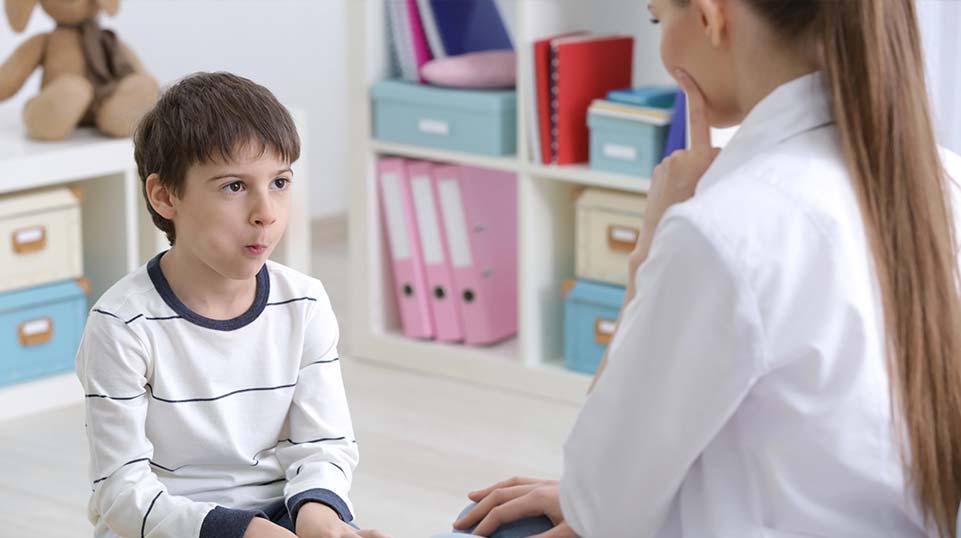When you think of speech therapy, you might imagine a therapist working with a child on pronouncing tricky sounds like “r” or “s,” or helping with delayed speech. While these are common reasons for speech therapy, they only scratch the surface of what it can do.
Many parents don’t realize that speech therapy goes beyond just articulation—it also supports language development, social communication, the ability to follow directions, and academic skills like literacy, comprehension, and problem-solving.
If you ever find yourself asking, “Is this normal?” or “Does my child need speech therapy?” A great resource is the American Speech-Language-Hearing Association’s Communication Milestones, which outline what to expect at each age. If you have concerns about your child’s speech and language development, Westside offers free screenings to help you get answers and peace of mind!
Early intervention is key, and speech therapy can address a range of communication challenges, from articulation to language comprehension. Let’s explore how it can make a difference.
Articulation Therapy (Phonology and Apraxia)
Articulation therapy focuses on helping your child make specific sounds or sound patterns so they can be better understood by others.
There are two common types of articulation challenges: phonological disorders and apraxia. Phonology involves patterns of sound errors, such as consistently replacing one sound with another (“tat” for “cat”). Apraxia, on the other hand, involves difficulties with motor planning, meaning the brain has trouble coordinating with the muscles needed to speak clearly.
When to Seek Help:
By the time your child is 2, you should be able to understand about 50% of what they say, and by age 4, their speech should be clear enough for almost everyone to understand. If you find yourself struggling to understand most of what your child says—or if others, like teachers, grandparents, or friends, often need you to interpret—it might be time to consider articulation therapy. This type of therapy can help give your child the tools they need to communicate clearly and confidently.
Language – Receptive and Expressive
What is Receptive Language?
Receptive language refers to your child’s ability to understand and process language. This includes following directions, answering questions, and identifying objects.
Signs of Receptive Language Issues:
- Difficulty following directions.
- Inability to point to familiar items, such as when asked, “Where is the cow?” while looking at a book.
- Struggles with identifying objects or understanding concepts.
- Teacher reports that show your child has trouble with story comprehension in school.
What is Expressive Language?
Expressive language is your child’s ability to use language to communicate their thoughts, needs, and ideas effectively. This includes building vocabulary, forming sentences, and using correct grammar.
Signs of Expressive Language Issues:
- Limited vocabulary or trouble finding the right words to express themselves.
- Difficulty forming sentences or frequent grammar mistakes.
- Noticing that other children the same age seem to be talking more or communicating more clearly (e.g., “Other kids at the park are talking more than my child”).
Many parents assume their child understands them but struggles to get the words out, which would point to an expressive language delay. However, it’s common for children with expressive delays to also experience receptive language delays, which can be harder to spot. Receptive language development comes first—it’s the foundation for expressive language. Think of it this way: if a child doesn’t fully understand the words being said, they won’t know how to use those words to communicate.
Our free screening can help identify receptive and expressive language delays, guiding you toward the next steps in supporting your child’s development.
Social Pragmatic Skills
What are Social Pragmatic Skills?
Social pragmatic skills involve the ability to use language appropriately in social situations. This includes things like greetings, taking turns in conversations, maintaining a topic, and understanding nonverbal cues like facial expressions and body language.
Signs of Social Communication Challenges:
- Challenges with making friends.
- Difficulty initiating or joining conversations.
- Trouble maintaining a conversation or staying on topic.
- Struggles with picking up on social cues, such as understanding when someone is bored or wants to talk.
Why This is Important:
Kids need strong social communication skills in order to make (and keep) friends, and navigate social situations like recess, birthday parties, and playdates. Kids who struggle in this area may find it difficult to connect with others or succeed in group settings, both in and out of school. Speech therapy can help your child develop these skills, setting them up for positive interactions and a better ability to connect and communicate with others.
Fluency (Stuttering)
Fluency refers to the smooth, uninterrupted flow of speech. When a child speaks fluently, their words flow naturally without unnecessary pauses, repetitions, or prolonged sounds.
Signs of Stuttering:
- Frequent hesitations, repetitions of sounds or words, or dragging out certain sounds.
- These signs often appear between ages 3-5, particularly during periods of rapid language development (also known as language bursts).
When to Treat Stuttering:
It’s common for preschoolers (ages 3-5) to experience brief periods of non-fluid speech due to a language burst, where they’re rapidly learning new words. This usually resolves on its own and doesn’t require speech therapy. However, if it lasts more than six months or causes noticeable frustration or embarrassment, treatment may be necessary.
The same applies to older children—if stuttering persists for over six months or leads to frustration or embarrassment, it may be time to consider therapy.
Treatment Approaches:
Speech therapy for fluency involves a combination of techniques to help your child speak more smoothly and confidently. One approach is modeling easy, relaxed speech, where the therapist demonstrates slow, calm speaking patterns for your child to imitate. As part of this approach, the therapist will work with the parents or caregivers on how to model this at home.
Fluency-enhancing strategies are also introduced, which include techniques like gentle pauses, controlled breathing, and reducing the pressure to speak quickly. Therapists also focus on building self-awareness and coping skills, so your child can recognize when they’re stuttering and use their strategies to communicate more confidently.
Voice Therapy
Voice therapy addresses problems with the quality, pitch, or strength of the voice. It’s often used to treat issues like chronic hoarseness, vocal nodules, or voice misuse, resulting from strain or overuse of the vocal cords.
Signs of Voice Problems:
- Persistent hoarseness that doesn’t go away.
- Frequent voice breaks or cracks while speaking.
- Vocal fatigue or discomfort after talking for a short period.
When to Seek Help:
If your child shows any of these signs, especially if the symptoms last for more than a couple of weeks, it’s a good idea to consult an ENT (ear, nose, and throat specialist) to check for vocal cord issues. You’ll want to rule out any medical concerns before starting speech therapy. Voice problems are often seen in school-aged children and can be improved with the right therapy techniques to protect and strengthen their voice.
Additional Areas Addressed in Speech Therapy
Cognitive-Communication Disorders:
Speech therapy can also target cognitive communication skills, such as attention, memory, and executive functioning. These areas often overlap with occupational therapy (OT), and are commonly seen in children with Attention Deficit Hyperactivity Disorder (ADHD), autism, and other neurodiverse profiles. Speech therapy can help children organize their thoughts and communicate effectively.
Augmentative and Alternative Communication (AAC):
For children with limited verbal communication, speech therapy may introduce Augmentative and Alternative Communication (AAC) tools. These can include devices like speech-generating devices or communication boards, which help children express themselves when traditional speech is challenging.
Support for School Success:
Speech therapy isn’t just about speaking—it also supports literacy, from reading comprehension to writing and other important school skills. By helping your child follow directions, understand what they read, and express their thoughts clearly, speech therapy lays the groundwork for academic success.
Early intervention is key to getting kids ready for school. The earlier speech and language challenges are addressed, the better prepared your child will be to thrive in both academic and social settings, giving them a strong start in school and beyond.
Free Screenings – Take the First Step
Early screenings can help identify potential speech or language issues before they lead to further delays. It’s much easier to address speech challenges early on, before they become ingrained patterns.
At Westside Children’s Therapy, a free screening is a simple 15-minute session with a speech therapist who will assess whether a more in-depth evaluation is necessary. If you have any concerns about your child’s speech or language development, there’s no need to wait for a doctor’s referral—Westside offers free screenings to help you take that important first step toward support!
Please call us at (815) 469-1500 or contact us to learn more!







